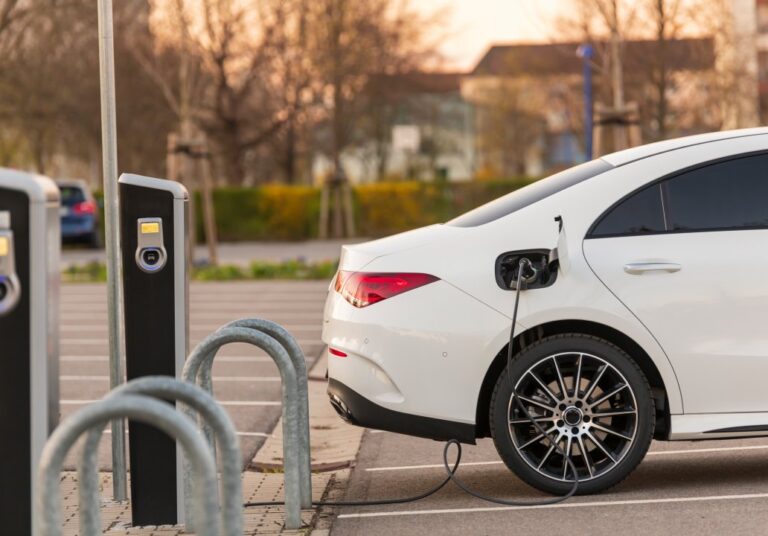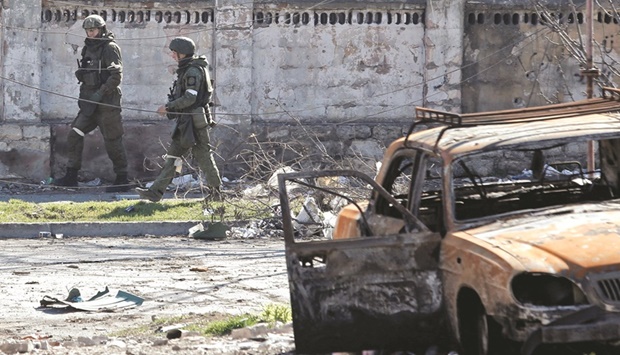Rising food costs push Arab world’s vulnerable to breaking point

Seated around the dining table, the family of four stares blankly at pictures of food sketched on the tablecloth. “Tonight,” the father says, “we’re coloring for dinner.”
The scene in a cartoon in a Moroccan newspaper speaks to the predicament facing the kingdom’s 37 million people and their peers across North Africa as the Muslim world marks Ramadan. Normally characterized by abstention broken by plentiful sunset feasts, the holy month for many this year is a confrontation with painful economic reality.
Global food costs are up more than 50% from mid-2020 and households worldwide are trying to cope with the strains on their budgets. In North Africa, the challenge is more acute because of a legacy of economic mismanagement, drought and social unrest that’s forcing governments to walk a political tightrope at a precarious time.
The Middle East and North Africa region’s net food and energy importers are especially vulnerable to shocks to commodity markets and supply chains resulting from Russia’s war on Ukraine, according to the International Monetary Fund. That’s in countries where the rising cost of living helped trigger the Arab Spring uprisings a little over a decade ago.
“Just how much more do we have to take?” asked Ahmed Moustafa, a 35-year-old driver and father of three in Cairo. He already had to sell some appliances to keep food on the table and cover other expenses, he said. “We keep being asked to cut and cut and cut, but there’s not much left to cut from.”
Home to large, mainly urban populations and lacking oil wealth, governments in Egypt, Morocco and Tunisia are struggling to maintain subsidies for food and fuel that have helped keep a lid on discontent.
The World Food Programme has warned that people’s resilience is at “breaking point,” while the United Arab Emirates moved to help ally Egypt, the world’s largest buyer of wheat, to shore up its food security and ward off potential instability. Egypt is also seeking IMF help.
Egyptian President Abdel-Fattah El-Sisi has tried to push ahead with reforms to revive the economy since coming to power in 2014 without fueling popular frustration. He sought last month to unite the nation behind inevitable sacrifices.
That includes shunning old habits of over-consuming — especially during Ramadan, which started on April 2. “People think that my dining table looks different,” El-Sisi said at March 23 event, urging the country of over 100 million to scale back during the Iftar meal that breaks the day-long Ramadan fast. But, “I am responsible before God,” he said.
Just weeks ago, Egyptian officials were quick to take pride in the fact that the economy of the Arab world’s most populous nation had weathered the pandemic and posted solid growth. Inflation, too, was under control.
That changed after Russia’s invasion of Ukraine on Feb. 24. Investors pulled billions of dollars from the country’s debt market and the currency sank 15%. Egypt banned exports of key foodstuffs including flour, lentils and wheat.
By early March, the war had pushed up wheat-flour prices by 19% and vegetable oils by 10%, the government said. That’s in a country where the average family income is about 5,000 pounds ($272) a month — roughly 31% of which is spent on sustenance, according to the state-run statistics agency.
Hilal El-Dandarawy, a retired state employee in the southern city of Aswan, said he’s now bracing for a surge in fuel prices and a tsunami of other increases. “We are living in a price crisis in goods and services, electricity, water and gas,” he said.
A worse situation is playing out in Tunisia, the nation that gave birth to the Arab Spring revolts and which has been mired in political turmoil ever since. The pounding the economy took as a result of that infighting among officials is now amplified thanks to COVID-19 and Russia’s war on Ukraine.
The central bank has warned that strong measures must be taken to reform the economy, but such efforts have been repeatedly blocked by the powerful UGTT labor union. Tunisia, too, is turning to the IMF amid warnings about the risk of default on its debt.
The dilemma for Ahmed Masoud, a 40-year-old merchant in the old city in the capital Tunis, brings those broader issues into sharper focus. He complained that the dearth of tourists, which had begun due to the pandemic, is now exacerbated by the Ukraine conflict.
Government assistance to offset the drop in business has barely made a dent and he can barely cover utility bills. “I think I’ll close my shop and look for another job,” Masoud said, with a resigned shrug.
Back in neighboring Morocco, things aren’t any better. While it managed to avoid the political upheavals of the Arab Spring in 2011, it hasn’t been spared on the economic front. Growth is expected to grind down to 0.7% this year, around a tenth its level in 2021. The central bank predicts inflation, meanwhile, will hit 4.7%, relatively modest compared with even parts of Europe, though still the highest since the 2008 financial crisis.
Managing the “exogenous shock” of the war may force Morocco to seek a precautionary liquidity line from the IMF, Governor Abdellatif Jouahri said. Morocco is facing “an unprecedented situation,” he added. The war in Ukraine is threatening to stoke public anger over prices and send the state’s financing needs to historic highs.
Grains merchant Mohamed Bellamine, whose shop in Rabat’s Rahba market would normally be heaving with shoppers in the days before Ramadan, sees the impact clearly. He gestures to the empty street with a sigh: “Usually you wouldn’t even be able to find a place to park.”







